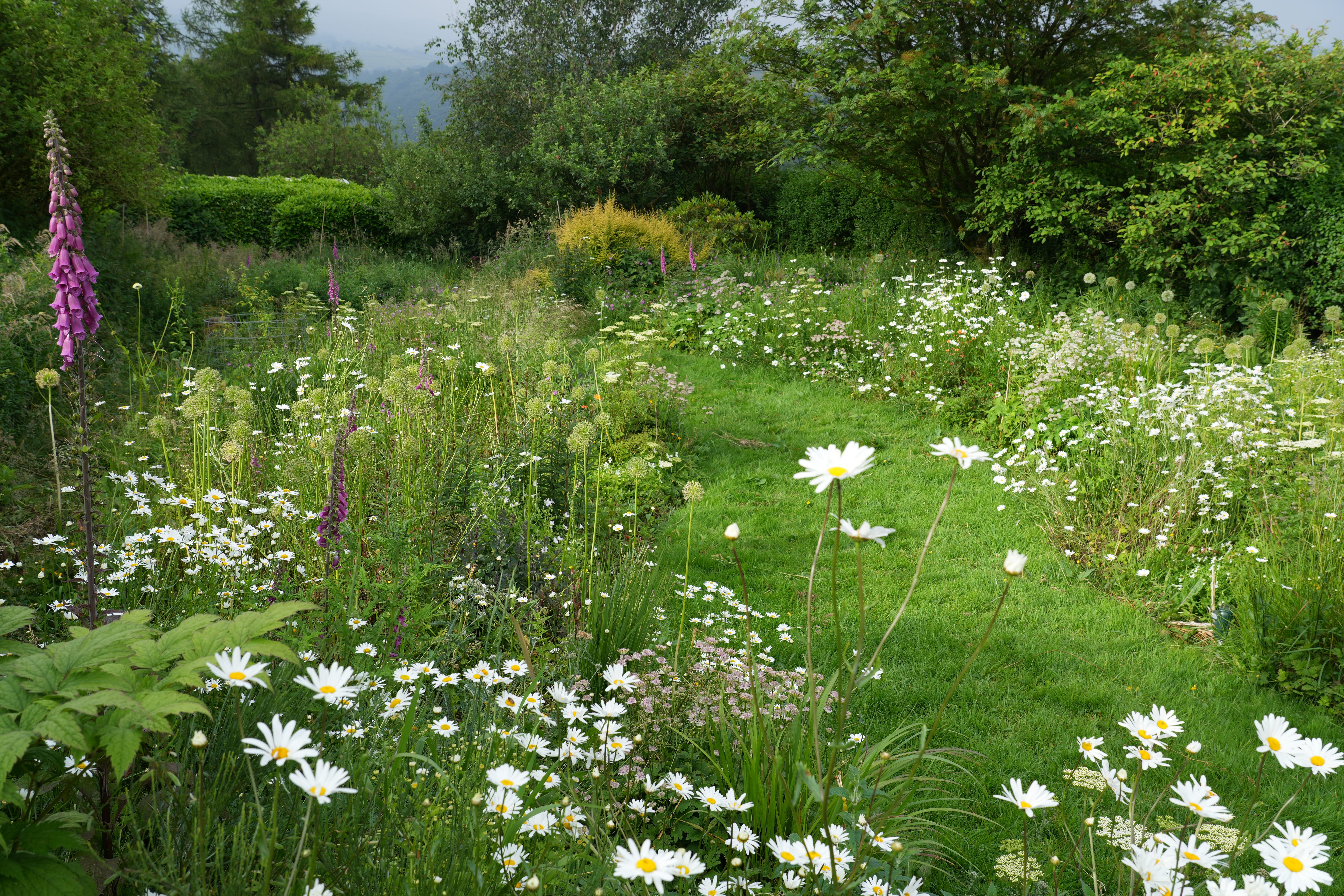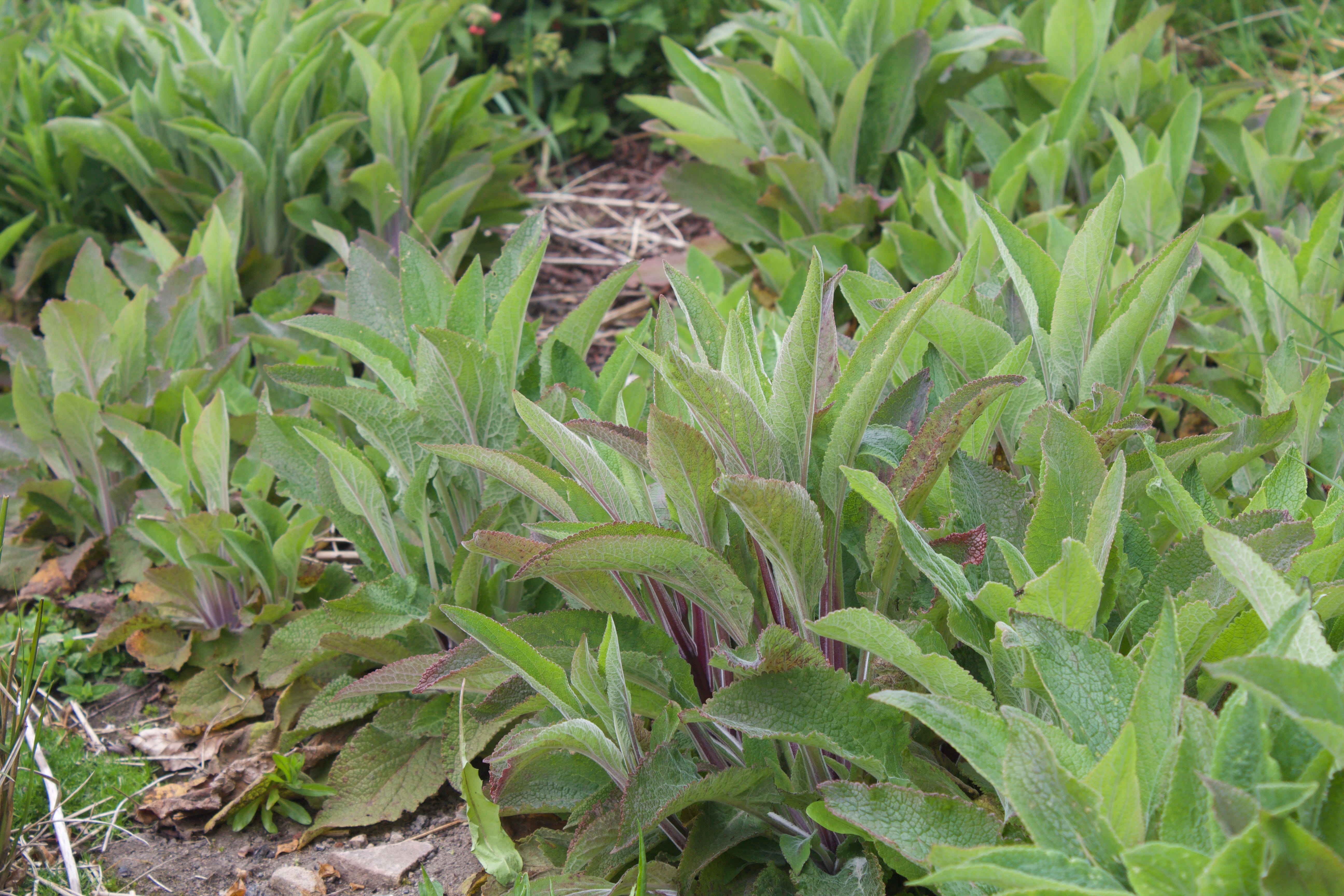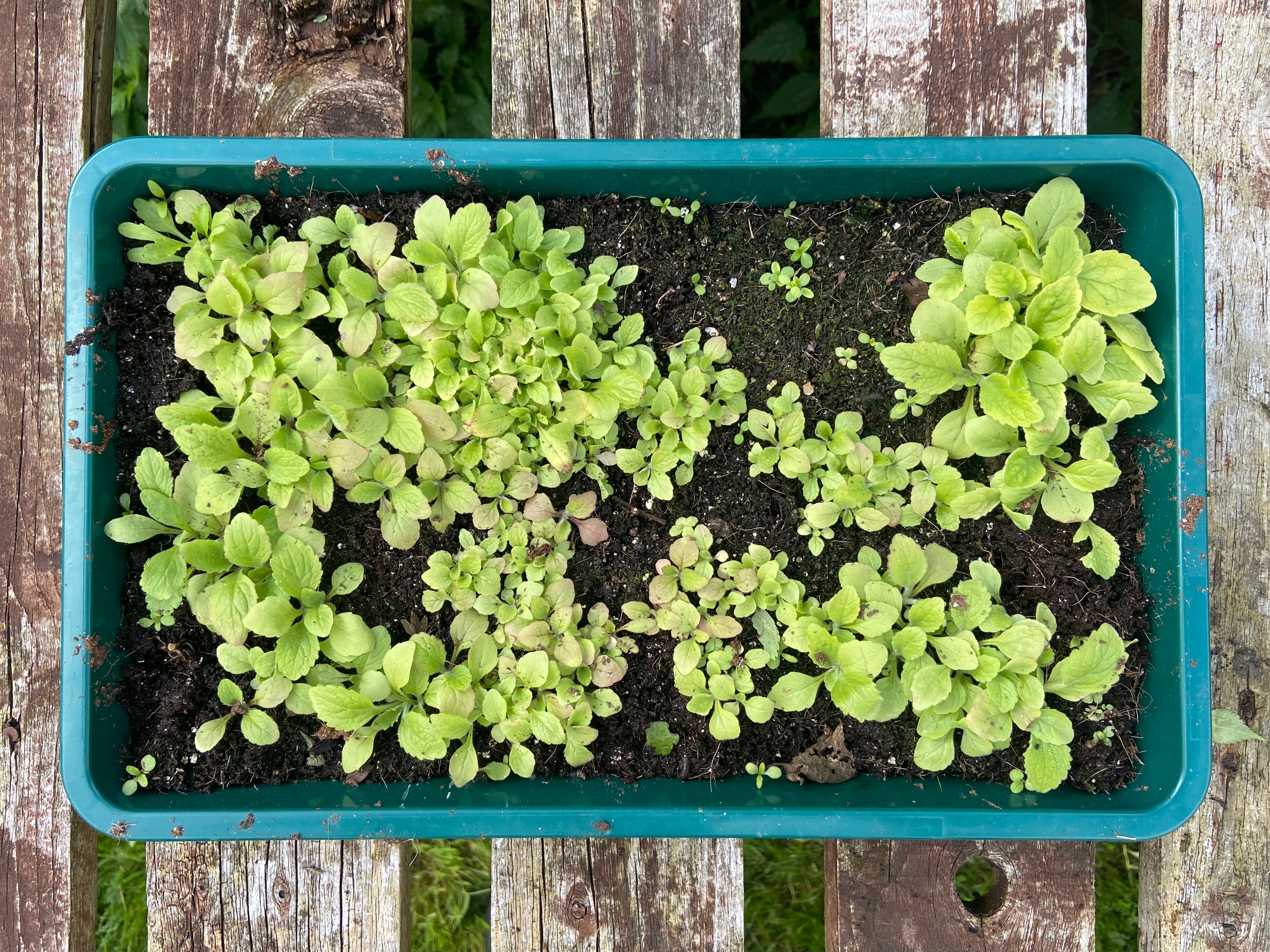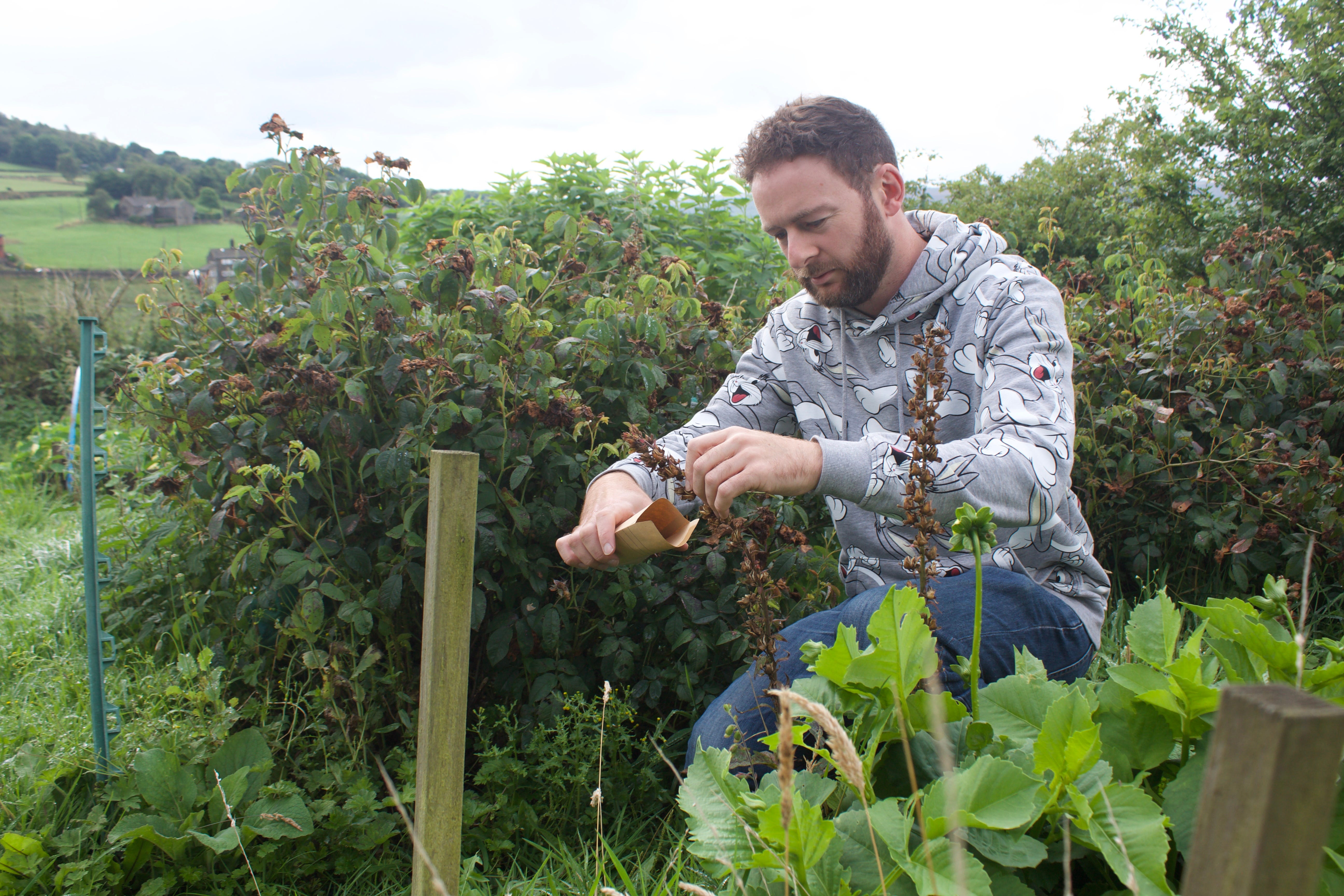Digitalis purpurea | foxglove
How to grow these cities of towering wildflowers for bees and colour
It’s well documented in my book Wild about Weeds how much I love foxgloves. They’re classic and timeless, yet contemporary with a slim vertical inflorescence of bell shaped flowers. They mark the early summer months across the UK and the rest of Europe when they can be found growing at the foot of walls, woodland edges and pathways. Loved by bumblebees that buzz their way upward from flower to flower, they are an essential plant in garden design for their upright shape and ability to self sow gently in gaps that need filling.
Need to know information about Digitalis purpurea
Digitalis purpurea originates from the very western side of Europe, plus up to Sweden and down to the very top of north Morocco. It’s since been introduced around the world by people, likely largely by gardeners for ornamental use. As an aside, it’s interesting to me that most plants that evolved in Europe did so along the coast of Northern Africa too, evidence primarily of historic land connections and secondly of natural seed transportation by birds and sea.
Foxgloves are biennials; they grow leaf rosettes in the first year, flowering in the second. Occasionally they can flower again for a third or fourth year, making them a short lived perennial but are unlikely to survive longer than this.
Naturally they flower in a mix of pink shades, plus the common but less prolific white form called Digitalis purpurea f. albiflora. In botanical language, the term form is used to categorise a plant as the same species but with a minor difference that’s not enough to separate it as a sub or separate species. Colour is visually very different to us, but otherwise, a white wild foxglove is no different to a pink one. You can often tell the colour when they are a seedling by the colour of the leaf stem, which takes on a pink hue for the pink flowered plants. White foxgloves have noticeably pale seedling leaves.
Many flowers have white forms where they lack colour pigment. Gardeners have managed over the years to raise more stable strains of foxglove seed that can help you choose between the two colours, alongside a vast range of different coloured cultivars and hybrids. Around the world there are many different species of foxgloves, Digitalis lutea and Digitalis ferruginea are grown in temperate gardens.
Foxgloves can grow in full sun to almost full shade. I find they tend to prefer in-between part-shade where they get some direct sun for a few hours, then time off in shade from a wall, shrub or nearby tree. This makes them very useful for growing in borders where they can grow among dense shade creating plants. However, buyer beware! Foxgloves are terrible at establishing naturally in high competition, which I’ll discuss below.
You can grow Digitalis purpurea in any soil as long as it isn’t completely dry in summer.
Is Digitalis purpurea edible?
NO! Digitalis purpurea is poisonous if eaten, small amounts will give you an upset stomach, large amounts potentially could kill someone. Be reassured, foxgloves grow around the world in their millions each year and I have never heard of foxglove poisoning! Don’t eat them.
I know parents can feel worried about foxgloves but we grew up with them in our old cottage garden in the Chiltern Hills, growing in the borders and along chalky country lanes. Our parents just told us they were poisonous and we shouldn’t touch them, so we didn’t.
How to grow foxgloves from seed
As a biennial with usually one, or sometimes two or three stems from the same growing point, you can’t divide foxgloves, they must be grown from seed. Luckily this is incredibly easy!
You can scatter seeds where you want them to grow in autumn or spring, but make sure they go into bare soil. Foxgloves don’t like competition at the germination or young stage and despite producing vast quantities of seeds in their thousands, there’s a reason why the entire country isn’t all foxgloves. They struggle to germinate in competition, which is why they grow along wall edges, on the edge of tree shade etc. (Please refer to the Plant vigour lesson for more on this topic).
We have Digitalis purpurea growing along the walls of our meadow but they don’t stand a chance within the crowded meadow itself, which is why they never venture in. But one year, when I scraped off lawn in our garden to create a new planting area, the entire patch of bare soil naturally became the foxglove patch from historic seeds, shown in one of the pictures earlier.
For guaranteed success, sow the fine dust sized seeds onto the surface of peat free compost, watering from below by sitting the tray or pot in a little water. Within a few weeks they will germinate in large numbers - they don’t like competition but they do like growing when they have space to themselves!
Once they have 4-6 leaves, gently tease the foxgloves out of the compost with a stick or fork, being careful not to damage their roots, then plant into a larger pot. Plant into the ground when they are about 10-15cm or more in width, when they are large enough to compete with other plants.
Collecting foxglove seeds is easy and fun. Keep an eye out for a plant you like in summer and note where it is. Revisit regularly toward the end of flowering and look for the dried brown seed pods where flowers used to be, they tend to ripen while the rest are still flowering.
When pods open, seeds easily pour out and you can tip a few into an envelope or my recyclable seed packets. Sow right away or in spring.
Using foxgloves in garden design

I love, love, love foxgloves for garden design and I hope I can do them justice by explaining why.
Firstly I guess, they are easy to grow and reliable, these wildflowers do what you expect them to do. Little wildlife eats them and they don’t attract any fungi or bacteria. Occasionally the stem may be nibbled killing growth above, but rather than a problem, this causes the foxglove to grow multiple flower stems instead, seemingly going into overdrive to compensate! It’s worth cutting one stem off at the top to see this happen yourself.
Secondly, as you can see in our garden above, the vertical shape adds a visual element that is a satisfying contrast to lower or more fluffy plants, like the Deschampsia grass and ox-eye daisies. They are particularly tall and narrow, while still being impactful from a distance as well as up close.
Thirdly, their colour is easy to combine with most plants. From the purple-pink to the clean white. The white form to my eye lends itself to elegant, contemporary planting. While the pink is warm and inviting. I love either, though there is nothing better than a white foxglove glowing in deep shade where it brings lightness and an ethereal quality.
This is all incredibly useful for design because it gives you easy impact to transform a space in sun or shade. By letting Digitalis purpurea grow through a garden, as you can see in the photo, they give you structure, bouncing your eye across even chaotic wild planting. Planted on mass, the patterns of line and flower they create can be spectacular.
Once Digitalis purpurea is established in your garden and self sowing, it is easy in spring to move seedlings around to better spots. Giving you free flowers with oomph to fill gaps.
It’s the very narrow vertical shape of foxgloves that makes them look contemporary to me, working well with a modern palette of plants and an ongoing star of future gardens.
How to understand plant vigour
If there’s one thing I think the gardening world has missed in educating gardeners over the centuries, it’s plant vigour. Without understanding vigour, it’s no wonder gardeners struggle with balancing long term permaculture planting and maintenance.
How to establish permanent wildflower plantings
You don’t need a meadow to grow wildflowers, I dot them in our garden borders among cultivated plants. By their nature, most wildflowers are easy plants - they grow where they grow because they like and evolved in exactly those conditions. Once established, they tend to look after themselves but establishing wildflowers in the first place isn’t always straightforward. Here I’ll share some tips and tricks I’ve learnt over the years for starting wildflowers in your garden.









I love foxgloves. An up side to their toxicity is that deer won’t (usually) bother them, something that endears them to those of us who live in deer country.
Thanks Jack. Up here in Katoomba, Blue Mountains, Australia with a cooler climate, we have a lot to share. Including Foxgloves ☀️